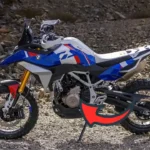The Indian electric vehicle market is seeing major action in 2025, especially in the premium SUV segment. Two strong contenders, the Tata Harrier.ev and the Mahindra XEV 9e, are now making headlines. Both offer cutting-edge features, powerful electric drivetrains, and competitive pricing.
Here’s a full comparison to help you decide which EV suits you better.
Price and Availability
- Tata Harrier.ev is priced between ₹21.49 lakh and ₹27.49 lakh (ex-showroom) for rear-wheel-drive (RWD) variants. Bookings open from July 2, 2025. All-wheel-drive (AWD) variant pricing is expected soon.
- Mahindra XEV 9e is priced between ₹21.90 lakh and ₹30.50 lakh depending on variant and battery option.
Verdict: Harrier.ev starts at a slightly lower price, offering better value in base models.
Battery, Range and Charging
| Feature | Tata Harrier.ev | Mahindra XEV 9e |
|---|---|---|
| Battery Options | 65 kWh / 75 kWh | 59 kWh / 79 kWh |
| Claimed Range | Up to 627 km | Up to 656 km |
| Real-World Range | Around 480–500 km | Approximately 500+ km |
| Fast Charging | Up to 120 kW | Up to 189 kW |
Verdict: Mahindra offers faster DC charging and a higher maximum range with its larger battery.
Performance and Driving Experience
- Tata Harrier.ev AWD (upcoming) is expected to deliver 390 bhp and 640 Nm of torque, with a 0 to 100 km/h time of 6.3 seconds.
- Mahindra XEV 9e offers 282 bhp with the larger battery and does 0 to 100 km/h in 6.8 seconds.
Verdict: Tata Harrier.ev has more power and AWD for off-road or performance driving.
Design and Interior Features
- Harrier.ev has a strong SUV design with signature LED lights, bold front fascia, and a 14.5-inch touchscreen with a QLED display.
- XEV 9e features a sleeker SUV-coupé profile, flush door handles, panoramic glass roof, and a modern cabin with triple digital screens.
Verdict: Harrier.ev is suited for those who prefer rugged SUV styling; XEV 9e is better for those who value futuristic design and advanced interiors.
Safety and ADAS
Both SUVs come with advanced safety features, including:
- 5-star Bharat NCAP safety ratings
- 7 airbags
- Electronic Stability Control (ESC)
- 360-degree surround view camera
- Level 2 Advanced Driver Assistance Systems (ADAS) including adaptive cruise control, lane keep assist, and automatic emergency braking
Verdict: Both vehicles are equally matched when it comes to safety and driver assistance.
Final Comparison Summary
| Feature | Tata Harrier.ev | Mahindra XEV 9e |
|---|---|---|
| Starting Price | Lower | Slightly higher |
| Top-End Variant Price | Lower | Higher |
| Battery Range | Competitive | Slightly higher |
| Charging Speed | Good | Faster (up to 189 kW) |
| AWD Availability | Yes (coming soon) | No |
| Design Approach | Rugged SUV | Sleek, modern coupé |
| Interior Display | Larger single screen | Three-screen layout |
If you want a feature-rich, rugged, and performance-oriented electric SUV with AWD capabilities, the Tata Harrier.ev is a strong pick. On the other hand, if fast charging, stylish looks, and a tech-heavy cabin matter more, the Mahindra XEV 9e is a great choice.
Both are top-tier electric SUVs built for modern India, and the final choice depends on your lifestyle and preferences.










